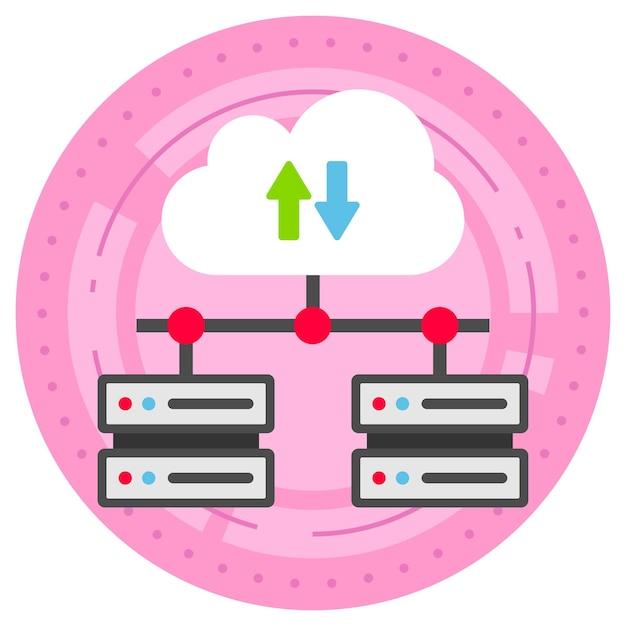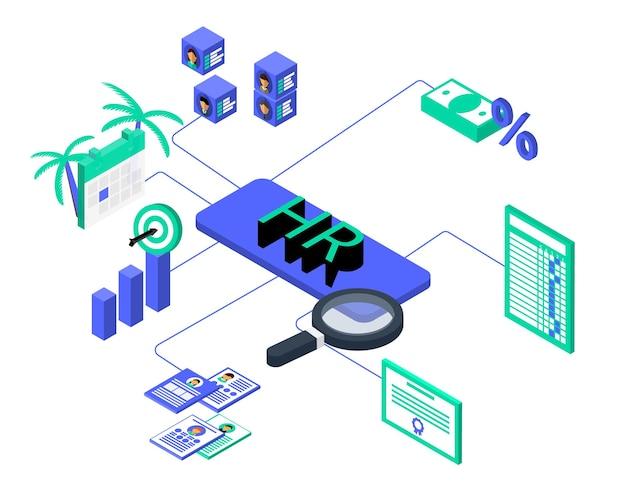Data transformation engines are becoming increasingly important in the modern world. With the explosion of big data and the need for complex business analytics, it’s critical to have a tool that can quickly and accurately transform raw data into usable information.
In this blog post, we will explore the basics of data transformation engines, including what they are, how they work, and the different types of tools available on the market. We will also discuss the benefits of using a data transformation engine and what to consider when choosing the best one for your needs.
We will delve into the four types of data transformation processes and discuss each process in detail. Additionally, we will provide insights into several popular data transformation tools, including Data Processing Engine Salesforce, EAI Data Transformation Engine BS in Siebel, and popular tool dbt.
By the end of this blog post, we guarantee that you’ll have a clear understanding of data transformation engines, the tools available, and how to choose the best one for your needs. Whether you’re an experienced data analyst or just starting, this guide will have something for you. So, grab your coffee and let’s get started!
Data Transformation Engine: The next-generation data processing tool
In today’s digital world, data is the most precious asset of any business. Although data comes in different shapes and sizes, it all has one thing in common: it needs to be transformed into usable information. The process can involve cleaning, parsing, filtering, aggregating, and modeling data to make it more accessible, discoverable, and actionable.
This is where a data transformation engine (DTE) comes in. A DTE is a software tool that automates data processing tasks and makes them more efficient, accurate, and scalable. It acts as a mediator between different data sources, such as databases, files, and APIs, and transforms all types of data into a format that is easy to analyze, visualize, and report.
What is a data transformation engine
A data transformation engine is a set of algorithms, rules, and workflows that transform raw data into meaningful insights. It can handle various data formats, including structured and unstructured data, text, images, audio, and video, and apply various operations on them, such as filtering, sorting, joining, grouping, and aggregating.
A DTE can also integrate with other data processing technologies, such as business intelligence (BI), data integration, master data management, and data governance. It can improve the quality, accuracy, and consistency of data while reducing errors, redundancy, and overheads.
How does a data transformation engine work
A data transformation engine works by following a set of predefined rules, which dictate the data flow and processing steps. It starts with the data ingestion, where it receives data from different sources and transforms them into a unified format.
Then, the DTE applies various transformation operations on the data, such as data cleansing, data mapping, and data enrichment. It also performs data validation and data quality checks to ensure that the data is accurate, complete, and consistent.
Finally, the DTE outputs the transformed data in a format that can be easily consumed by downstream applications, such as BI tools, data warehouses, reporting engines, and dashboards.
What are the benefits of a data transformation engine
A data transformation engine offers many benefits to businesses, including:
- Faster time-to-insights: A DTE can automate time-consuming and repetitive data processing tasks, reducing the time and effort required to get insights from data.
- Improved data quality: A DTE can improve the accuracy, consistency, and completeness of data by applying various rules and validations.
- Scalability: A DTE can handle large volumes of data across different sources and formats, making data processing more scalable and efficient.
- Reduced costs: A DTE can reduce the need for manual data processing and improve resource utilization, resulting in lower operational costs and higher ROI.
In conclusion, a data transformation engine is a powerful tool that can help businesses unlock the value of their data by making it more accessible, reliable, and actionable. With the increasing amount of data being generated every day, a DTE can be the key to success in today’s data-driven world.
What are Transformation Tools
Data transformation tools enable users to process and convert data from one format to another. These tools are essential for handling large amounts of data that may not be fully compatible with a particular system. With the advent of big data, many companies often need to process, transform, and manipulate data continuously, making these tools vital for business operations.
Key Features of Transformation Tools
Transformation tools come with many features to facilitate data processing, conversion, and manipulation. Some of the essential features include:
Data Mapping
Data mapping is one of the most basic and crucial features of transformation tools. It allows users to map source data fields to target data fields, customize mappings, and define complex business rules.
Data Manipulation
Data manipulation is another crucial feature of transformation tools, allowing users to manipulate data by adding, deleting, or modifying data items and structures.
Data Integration
Integration features enable data transformation tools to integrate with other systems, databases, or apps. This integration facilitates sharing and processing data across various systems.
Types of Transformation Tools
There are several types of transformation tools available in the market today, catering to different needs. Some of the most common types include:
ETL Tools
Extract, Transform, Load (ETL) tools are the most commonly used transformation tools, widely employed in data warehousing applications. ETL tools are designed for managing large volumes of data and are typically used in batch processing.
Data Integration Tools
Data integration tools allow companies to combine data from multiple sources in one location, streamlining the data integration process.
Data Quality Tools
Data quality tools help to ensure the accuracy and integrity of data and transform data to meet specific standards.
With data volumes increasing by the day, transformation tools are becoming increasingly essential in data processing and manipulation. The features and types available vary, catering to specific needs and applications. Understanding these tools’ basics is the first step in selecting the appropriate tool to manage your data requirements.
Best Data Transformation Tools
Choosing the right data transformation tool can be challenging, especially if you’re new to data analytics. Fortunately, there are several data transformation tools available in the market today that can make your work easier and more efficient. In this subsection, we’ll explore some of the best data transformation tools you can use to transform your data.
1. Microsoft Power BI
Microsoft Power BI is a powerful data visualization and business intelligence tool that offers a suite of data transformation features. It automates data cleansing, transformation, and loading (ETL) processes, allowing you to integrate data from different sources easily. The user-friendly interface makes it easy to drag and drop data elements, group data, and aggregate it to create visualizations.
2. Talend
Talend is an open-source data integration platform that provides a fully functional suite of data transformation tools. It offers real-time data integration and supports big data, cloud, and hybrid environments. You can connect to different databases, cloud-based applications, and social media platforms. The transformation features include data profiling, cleansing, and enrichment.
3. Trifacta
Trifacta is a cloud-based data transformation tool that allows users to format raw data into clean, structured datasets. It’s an intuitive platform that uses machine learning to recommend transformations based on your data. You can manage multiple datasets and collaborate with others on the platform.
4. AWS Glue
AWS Glue is a cloud-based data preparation tool that offers ETL capabilities for data transformation. It allows users to extract data from various sources, transform it according to specific business requirements, and load it into various data stores. It supports various data sources, including relational databases, Amazon S3, and Hadoop Distributed File System (HDFS).
5. Apache NiFi
Apache NiFi is an easy-to-use data integration platform that allows users to build data flow processes to transform data. It provides a web-based interface that enables you to drag and drop different processors to construct complex data pipelines. This tool supports various data sources and can integrate with different technologies to manage big data and Internet of Things (IoT) solutions.
In conclusion, choosing the right data transformation tool is critical to the success of any data analytics project. With this list of the best data transformation tools, you’ll be able to find a tool that meets your specific needs. Evaluate each tool based on your requirements and choose the one that best suits your needs.
Data Transformation Tool (dbt)
Data transformation is one of the significant processes in data analysis. It involves taking raw data and converting it into a usable format for analysis and insights. Data transformation tools help in automating this process and make it easier for data analysts and scientists to manage and transform data sets.
One of the data transformation tools that have gained popularity among data analysts and scientists is data build tool (dbt). dbt is an open-source SQL-based data transformation tool that helps transform data sets into a usable format in a scalable way. It is a popular choice for teams who use cloud data warehouses like Amazon Redshift, Google BigQuery, and Snowflake.
Features of dbt
Easy Integration
dbt allows for easy integration with other data tools like Tableau, Looker, and Mode Analytics. This implies that you can use dbt to transform data, then connect it to these visualization tools for analysis.
Scalable and Reproducible
One of the most significant advantages of dbt is its scalability. It can help handle large data sets and automate complex transformations effectively. Additionally, it provides data analysts and scientists with tools to reproduce and test their work, ensuring their code is correct and consistent.
Collaborative
dbt is a tool built with collaboration in mind. It enables teams to integrate their work and processes seamlessly. It also facilitates team members’ communication since all the code is stored in a central repository, making it easy to share and collaborate.
Version Control
dbt uses the git version control system to keep track of code changes, making it easy for users to rollback changes when needed.
dbt is an excellent data transformation tool for both small and large teams. Its scalability, reproducibility, collaboration, and version control features make it an ideal choice for teams who want to automate data transformations and improve efficiency. With dbt, data analysts and scientists can easily transform data into a usable format for analysis and stay ahead of their competition.
Data Processing Engine Salesforce
Data processing engine Salesforce is a powerful tool used by companies to streamline their data operations. This engine is designed to integrate with Salesforce, making it a popular choice for businesses that are already using this customer relationship management (CRM) software.
What is Data Processing Engine Salesforce
Data processing engine Salesforce is a system that helps companies manage their data by automating tasks like data cleansing, data integration, and data migration. It is an efficient tool that allows businesses to aggregate data from various sources and transform it into a single format that is compatible with Salesforce.
How Does Data Processing Engine Salesforce Work
Data processing engine Salesforce works by leveraging Artificial intelligence, Machine Learning, and Natural Language Processing to perform complex data operations. The engine analyzes data to identify patterns and insights that can be used to improve business processes. It also provides real-time data analysis, which allows companies to make informed decisions quickly.
Benefits of Using Data Processing Engine Salesforce
Using data processing engine Salesforce provides several benefits to businesses. First, it allows for more efficient data management, which improves overall business processes. Second, it enhances data accuracy and data quality by automating data cleansing and data validation. And third, it enables real-time data analysis, which helps businesses make informed decisions quickly.
In conclusion, data processing engine Salesforce is a powerful tool that helps businesses manage their data more efficiently. Powered by Artificial intelligence, Machine Learning, and Natural Language Processing, this tool allows companies to automate their data operations, thereby improving overall business processes. Its benefits include enhanced data accuracy, higher data quality, and real-time data analysis. With these benefits, it is no wonder that data processing engine Salesforce is becoming increasingly popular among businesses that want to streamline their data operations.
What is a Data Transformation Engine
Data is the lifeblood of modern businesses, but it’s often scattered across multiple systems, formats, and sources. Transforming this data into a usable format can be a difficult, time-consuming process, especially for organizations with large data sets. That’s where a data transformation engine comes in.
Understanding Data Transformation
Data transformation is the process of converting data from one format to another while ensuring that the original meaning is preserved. It’s a crucial step in data processing because data often comes from different sources in different formats, and it needs to be standardized to ensure that it can be analyzed and utilized effectively.
Data transformation engines help automate this process, allowing organizations to transform their data quickly and efficiently. They’re designed to streamline the process of extracting, transforming and loading data (ETL) by allowing businesses to automate the process of converting raw data into useful formats.
What Can a Data Transformation Engine Do
A data transformation engine can do many things, including:
- Transforming data from one format to another (e.g. CSV to XML)
- Cleaning and standardizing data to ensure consistency across sources
- Validating data to ensure it’s compliant with business rules
- Mapping data between different tables or databases
- Filtering data to extract only the relevant information
Benefits of Using a Data Transformation Engine
Using a data transformation engine can bring many benefits to your business, including:
- Increased efficiency: automating the ETL process can save time and reduce errors that can occur with manual processing.
- Improved accuracy: data transformation engines can ensure that data is consistent across all sources and is compliant with business rules.
- Access to real-time data: data transformation engines can allow you to process data in real-time, enabling faster decision making.
- Better data quality: automated data transformation processes can reduce the likelihood of human error and improve the quality of your data.
In summary, a data transformation engine is a critical tool for modern businesses that need to standardize, validate, and transform their data for analysis and decision-making. By automating the ETL process, these engines can significantly improve efficiency, accuracy, data quality, and access to real-time data.
EAI Data Transformation Engine BS in Siebel
Are you looking for a reliable data transformation engine BS in Siebel? Look no further! Siebel Enterprise Application Integration (EAI) provides a powerful data transformation engine that enables data communication across different applications while addressing data integrity and consistency.
What is EAI
EAI is a technology infrastructure used to integrate different systems and applications within an enterprise. Through EAI, organizations can achieve seamless data flow, improved communication channels, and enhanced business processes.
Data Transformation Engine BS
The data transformation engine BS is one of the essential components of the EAI architecture. It enables data transformation from one format to another, mapping of data between entities, and validation of data consistency. The engine enables transformation of data between different applications such as Siebel, SAP, Oracle, Salesforce, and many others.
How Does the Engine Work
The data transformation engine BS works by taking incoming data from various applications and maps it to an output format that suits the target application. The engine uses common languages and protocols such as XML, HTTP, and SOAP to transfer data and ensure that there is data consistency and integrity.
Benefits of Using EAI Data Transformation Engine BS
By using the EAI data transformation engine BS, businesses can integrate with other applications, reduce the cost of maintenance, and improve their overall business processes. The engine also enables them to align their systems, eliminate redundancies, increase data reliability, and achieve better operational efficiency.
The EAI data transformation engine BS is an essential component of the Siebel EAI architecture. It provides seamless data flow, consistency, and communication channels across different applications. By using the engine, businesses can enjoy better operational efficiency, improved data reliability, and increased productivity. So, why not give it a try and see the benefits for yourself?
Types of Data Transformation: Exploring The 4 Main Categories
Data transformation is an essential process that helps organizations turn raw data into meaningful insights. Data transformation engines perform this job by cleaning, aggregating, and structuring data to make it available for analysis. There are four primary types of data transformations:
1. Structuring Data Transformation
The first category of data transformation is Structuring. Its purpose is to organize complex data formats such as CSV, JSON, XML, etc., into a structured format like a table. The process involves removing unnecessary columns, splitting data into different tables, or combining data from different tables into one.
2. Data Type Transformation
The second type of transformation is Data Type. It’s about changing the data type from one to another, such as from string to date-time, or integer to double precision. This transformation is essential because data comes from various sources, and sometimes the data type doesn’t match the requirements of the downstream system or analytics.
3. Aggregating Data Transformation
The third transformation is Aggregation. It involves grouping data into categories and calculating various statistics functions like average, sum, count, etc. The output of this transformation is a summarized report that shows the overall trend of the data set.
4. Cleaning Data Transformation
The fourth and final transformation is Cleaning. It involves detecting and correcting errors or inconsistencies in the data. The process includes data deduplication, standardizing values, removing null values, or filling in missing data.
In conclusion, a data transformation engine is crucial for organizations that want to extract insights accurately from raw and unstructured data. By identifying the four main types of data transformations, organizations can choose the appropriate methods to convert their data into information that guides their decisions.
Data Transformation Engine Initialization Failed
Data transformation engines are essential tools for data processing. They help in converting raw data into a format that’s easy to read, interpret, and analyze. However, like any other tool, these engines are not perfect and sometimes throw errors. One such error is the “data transformation engine initialization failed” error.
What is Data Transformation Engine Initialization Failed
Data transformation engine initialization failed is an error that occurs when a data transformation engine fails to start correctly. It could be due to a variety of reasons, such as incorrect configuration, corrupt data, or hardware failure.
What Causes Data Transformation Engine Initialization Failed
One of the most common causes of data transformation engine initialization failed is incorrect configuration. This error can occur when the configuration parameters are not set correctly, causing the engine to fail when started. Other causes include corrupt data files, incompatible hardware, and outdated software.
How to Fix Data Transformation Engine Initialization Failed
There are several ways to fix data transformation engine initialization failed. The first step is to check the configuration parameters and ensure that they are correct. If the problem persists, consider checking the data files for errors or corruption. It may also be helpful to check the hardware and software requirements for the engine and ensure compatibility.
In conclusion, data transformation engine initialization failed is a common error that can occur during data processing. It is essential to understand the causes and solutions to this error to ensure that your data processing runs smoothly. By following the steps mentioned above, you can fix data transformation engine initialization failed and avoid downtime in the future.



